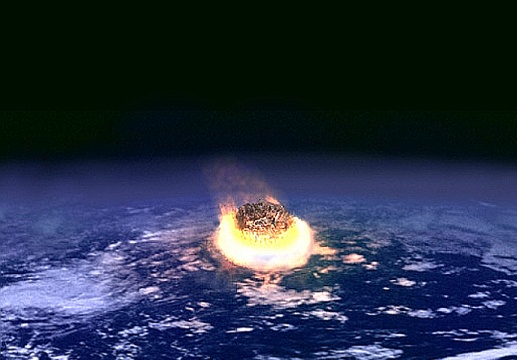We're open daily! View holiday hours
Science News
Nannoplankton Extinction
March 1, 2010

We all know about the extinction of dinosaurs 65 million years ago. But what about nannoplankton extinction?
Researchers at Penn State studying nannoplankton fossils with scanning electron microscopes have confirmed that certain geographic areas were harder hit than others after the Cretaceous-Paleogene extinction event. Many scientists believe that a large asteroid hit the earth, debris shot into the air, blocking sunlight. Photosynthesis declined, plants couldn’t grow, many animals went extinct.
The researchers in this study, published in this month’s Nature Geoscience, found that close to 98% of the species of nannoplankton went extinct in northern oceans, whereas the southerly oceans lost less; in one area, it was 73% of species that went extinct.
"There's an incredibly strong correlation between extinction rate and latitude," according to lead author Timothy J. Bralower. "This agrees with the fact that North American land plants were hammered and there was an especially severe mass extinction on that continent."
In addition, nannoplankton in the northern oceans took much longer to recover. In the southern hemisphere, diversity returned almost immediately. But in the northern hemisphere, it took 270,000 years to return to normal diversity.
Researchers believe that the long recovery could be due to toxic metals from the asteroid entering the northern oceans. "We still do not really know why some things die out, while others hang on by a shoestring and eventually recover," said Bralower.
Peter Roopnarine has another theory: "A much likelier explanation is delayed ecosystem recovery because of all the lost interspecific relationships and ecological functions."
He also notes that this could be an important lesson for today. "Ocean warming, and more importantly acidification, are threatening the descendants of these calcareous nannoplankton, and they are still the most important producers in the ocean. They also produce a significant amount of Earth's atmospheric oxygen. We are basically recreating some of the circumstances that would have prevailed at the time of the impact 65 million years ago. How far we'll go is really unknown, but we shouldn't even be on this path. It is obvious from the fossil record that it takes tens of thousand to millions of years for ecosystems to recover once they've collapsed in this manner."